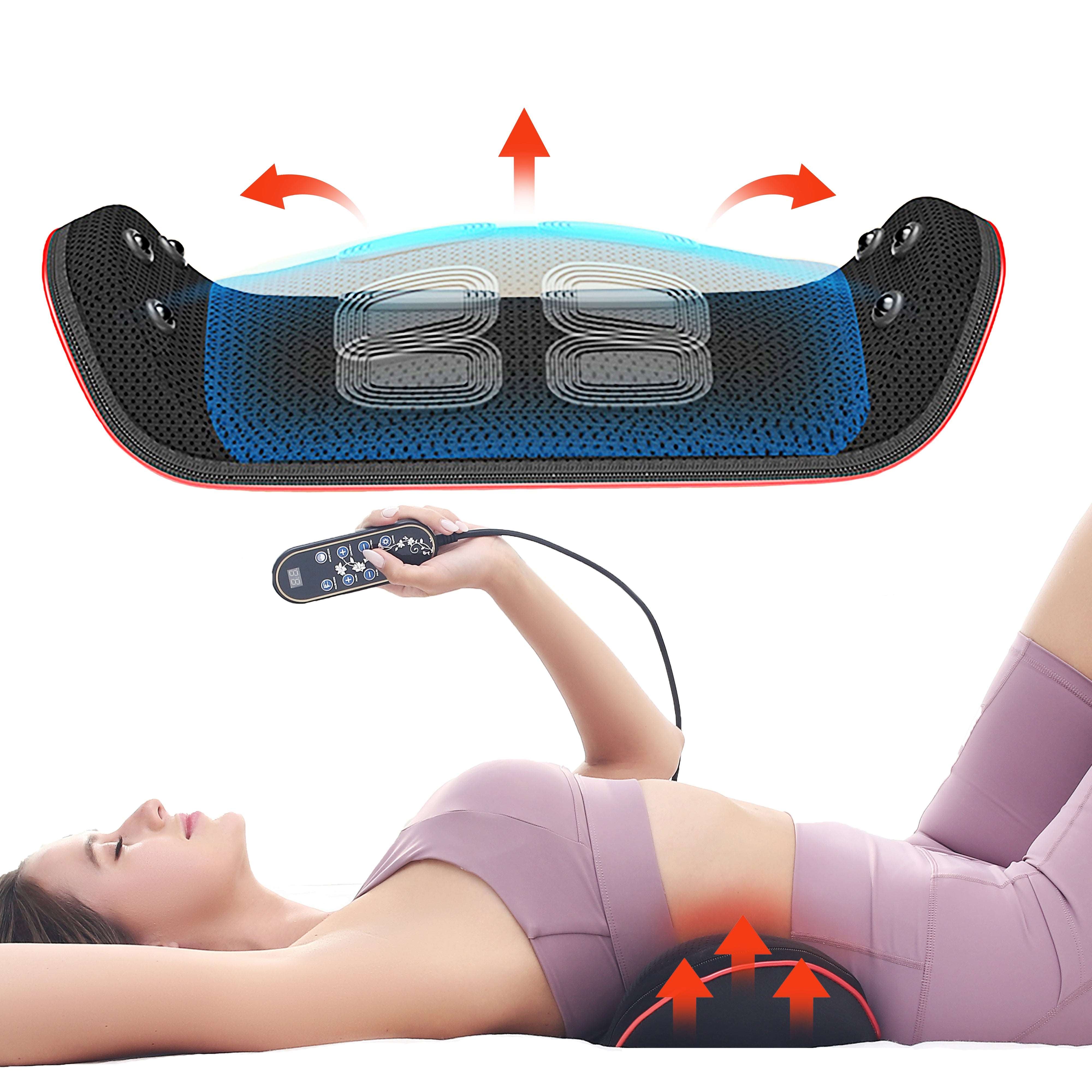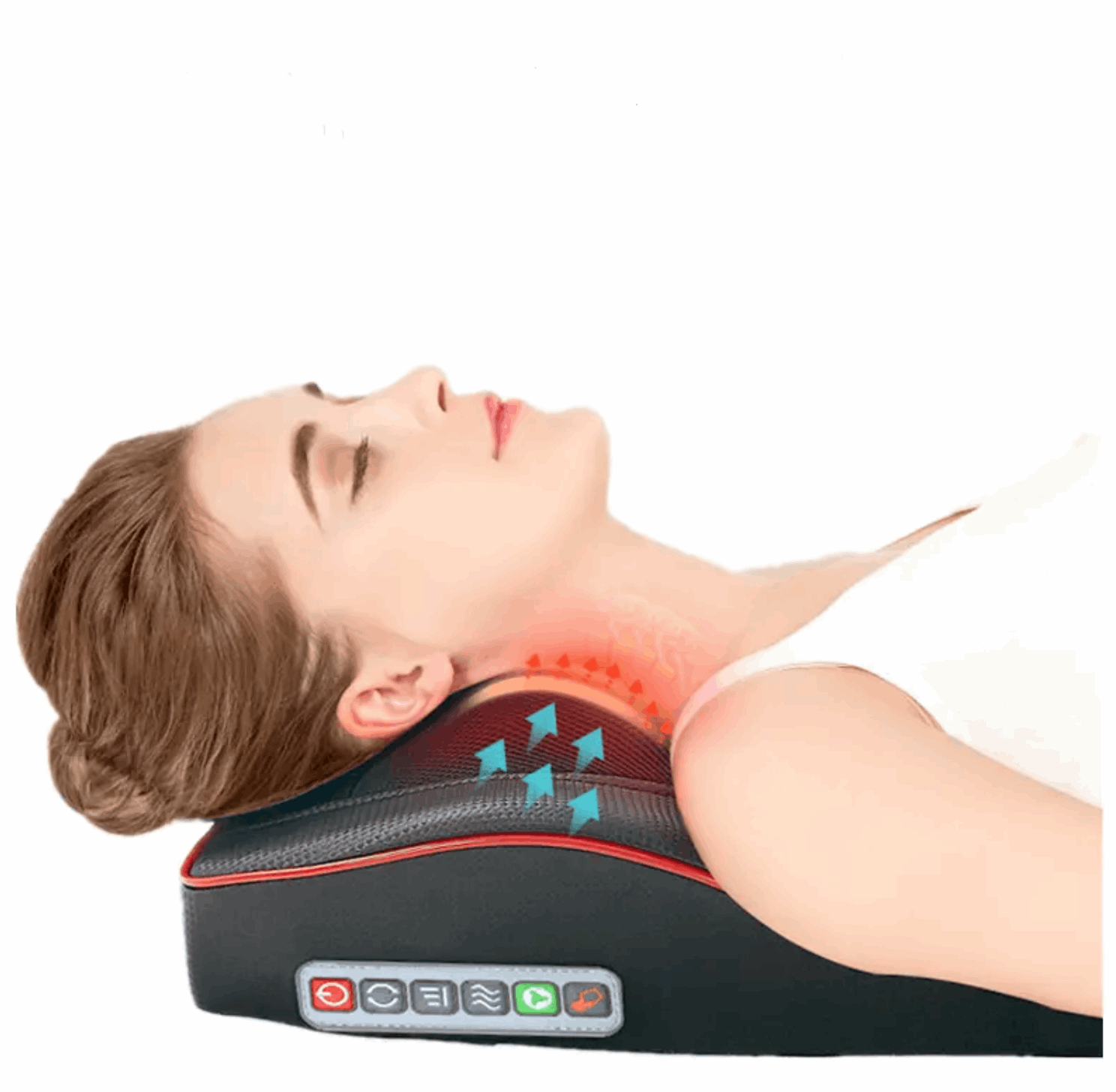Unraveling the Mystery of Back Muscle Pain and Nerve Pain: Causes and Tips for Relief

Back pain can be a real pain in the, well, back! Whether it's muscle pain or nerve pain, it can significantly impact your daily life and hinder your overall well-being. Understanding the causes behind these types of pain and implementing effective strategies to alleviate them is crucial. So, let's delve into the common causes of back muscle pain and nerve pain and explore some practical tips to improve these issues for a healthier and happier back.
WHAT WILL CAUSE BACK MUSCLE PAIN?
Muscle Strain: Overstretching or tearing of the muscles or ligaments in the back can result in muscle pain. Poor lifting techniques, sudden movements, or repetitive motions can strain the back muscles and lead to discomfort.
Poor Posture: Prolonged periods of slouching or maintaining an improper posture can place excessive stress on the back muscles, causing pain and muscle imbalances.
Sedentary Lifestyle: Lack of regular physical activity weakens the back muscles, making them prone to strain and injury. Sitting for extended periods without proper breaks or movement can contribute to muscle pain.
Obesity: Carrying excess weight puts additional stress on the spine and back muscles, leading to pain and discomfort.
Muscle Imbalances: Imbalances between the muscles of the back, abdomen, and hips can cause strain on the back muscles. Weakness in certain muscle groups and overcompensation by others can lead to pain and instability.
Tips for Improving Back Muscle Pain:

Maintain Good Posture: Practice proper posture by sitting and standing with your back straight and shoulders relaxed. Use ergonomic chairs and supportive pillows to maintain a neutral spine alignment.
Exercise Regularly: Engage in exercises that strengthen the back muscles, such as swimming, walking, or yoga. Strengthening exercises for the core muscles, including the abdominal and hip muscles, can also help provide stability and support to the back.
Lift Properly: When lifting heavy objects, bend your knees, keep your back straight, and lift with your legs instead of straining the back muscles.
Take Regular Breaks: If you have a sedentary job, make sure to take frequent breaks to stretch and move around. Incorporate simple stretches for the back muscles, such as forward folds or gentle twists, to reduce muscle stiffness and promote blood flow.
Maintain a Healthy Weight: If you're overweight, losing excess pounds can significantly reduce the strain on your back muscles. Follow a balanced diet and engage in regular physical activity to achieve and maintain a healthy weight.
Practice Stress Management: Chronic stress can contribute to muscle tension and exacerbate back pain. Incorporate stress management techniques like deep breathing exercises, meditation, or yoga to promote relaxation and reduce muscle tension.
HOW ABOUT NERVE PAIN? HERE IS WHY:

Herniated Disc: A herniated or slipped disc occurs when the soft inner material of a spinal disc protrudes and puts pressure on a nerve, leading to pain and nerve-related symptoms.
Sciatica: Compression or irritation of the sciatic nerve, which runs from the lower back down through the legs, can cause radiating pain, numbness, or tingling sensations along the path of the nerve.
Spinal Stenosis: Narrowing of the spinal canal, often due to age-related degenerative changes, can put pressure on the spinal cord or nerves, leading to nerve pain.
Pinched Nerve: Compression or irritation of a nerve by surrounding structures, such as bones, muscles, or tendons, can cause localized pain or radiating symptoms.
Nerve Damage: Injuries, medical conditions like diabetes, or certain diseases can result in nerve damage, leading to chronic nerve pain.
Tips for Improving Nerve Pain:

Seek Medical Evaluation: If you're experiencing persistent or severe nerve pain, it's crucial to consult a healthcare professional for a proper diagnosis and treatment plan tailored to your condition.
Physical Therapy: Engaging in physical therapy can help relieve nerve pain by improving mobility, strengthening muscles, and reducing pressure on the affected nerves.
Pain Management Techniques: Depending on the severity and underlying cause of the nerve pain, your healthcare provider may recommend pain management techniques such as medication, injections, or nerve blocks to alleviate symptoms.
Hot and Cold Therapy: Applying heat or cold packs to the affected area can help reduce inflammation, numbness, and pain associated with nerve issues. Experiment with both to see which provides more relief for your specific condition.
Low-Impact Exercise: Participating in low-impact activities like swimming or stationary cycling can help maintain flexibility, improve circulation, and reduce nerve pain without putting excessive stress on the affected area.
Mind-Body Techniques: Practices like meditation, relaxation exercises, and deep breathing can help manage nerve pain by promoting relaxation, reducing stress, and improving overall well-being.
Remember, every individual and every case of back pain or nerve pain is unique. It's essential to consult with a healthcare professional to determine the underlying cause of your pain and develop a personalized treatment plan. By incorporating these tips and working closely with your healthcare team, you can take proactive steps toward a healthier back and a life with reduced pain and discomfort.



